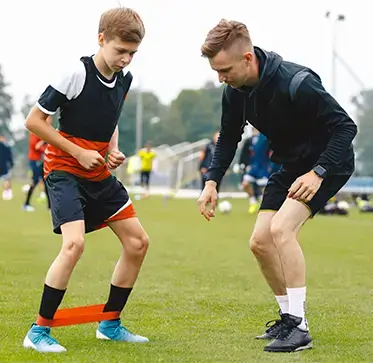CRFC BLOGS
LATEST BLOGS & NEWSLETTERS
The Role of Youth Soccer Strength Training in Preventing Soccer-Related Injuries
Soccer is one of the most popular sports among youth players, ranging from U5 to U19. While the sport offers numerous physical and mental benefits, it also comes with a risk of injuries. Studies show that proper strength training programs can significantly reduce injury rates while improving performance.
Why Strength Training is Essential for Youth Soccer Players
Strength training is often misunderstood in youth sports, with some believing it is only for older players. However, research confirms that structured strength training enhances young soccer players’ muscle stability, joint support, and overall injury resilience.
Common Soccer Injuries in Youth Players
- Ankle sprains – Due to sudden direction changes.
- Knee injuries – Often caused by improper landing and collisions.
- Hamstring strains – Resulting from sprinting and sudden movements.
- Groin pulls and hip injuries – Due to quick lateral movements.
How Strength Training Helps Prevent Injuries
Strength training reduces injury risks by:
- Improving muscle endurance – Stronger muscles reduce fatigue, preventing late-game injuries.
- Enhancing joint stability – Strengthening ligaments and tendons prevents sudden twists and sprains.
- Correcting muscle imbalances – Prevents overuse injuries by balancing lower and upper body strength.
- Improving body mechanics – Helps young players move efficiently, reducing stress on vulnerable areas.
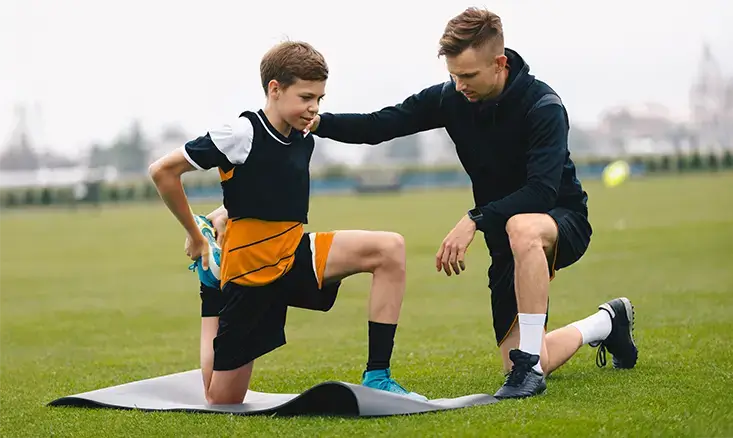
Key Strength Training Methods for Soccer Players
Different types of strength training contribute to injury prevention in youth soccer.
1. Traditional Resistance Training
- Uses body weights, bands, or light weights to improve overall strength.
- It is ideal for all age groups but should be modified based on maturity levels.
Exercises
- Squats (Air Squats for younger kids)
- Lunges (Forward & Side Lunges)
- Push-ups & Planks (Core Strength)
2. Eccentric Training
- It focuses on slowing down the lengthening phase of muscle contractions, reducing strain on tendons.
- Effective for preventing hamstring and knee injuries.
Exercises
- Nordic Hamstring Curls
- Reverse Nordic Exercises (for quadriceps)
- Slow Eccentric Squats
3. Plyometric & Balance Training
- Enhances coordination and neuromuscular control.
- Reduces non-contact injuries, especially ACL tears and ankle sprains.
Exercises
- Single-leg Hops & Skater Jumps
- Box Jumps (for power & landing control)
- Balance Drills (Bosu Ball Exercises)
4. Core & Stability Training
- A strong core provides better control and balance, reducing injury risks.
- Essential for injury prevention in high-contact situations.
Exercises
- Plank Variations (Side Planks, Shoulder Taps)
- Dead Bugs & Bird Dogs
- Medicine Ball Twists
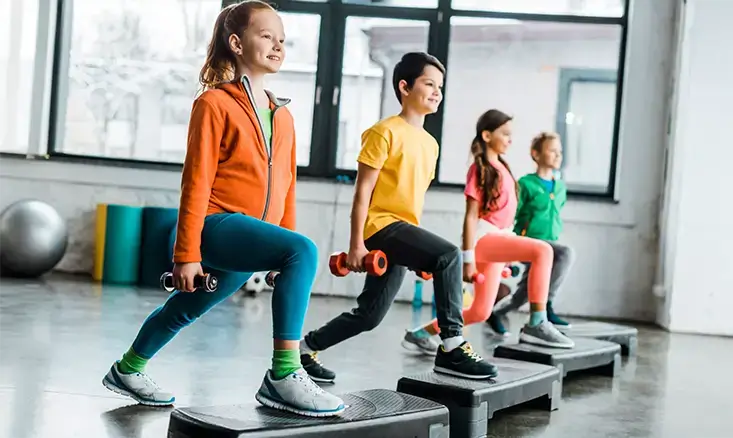
Age-Specific Strength Training Guidelines
Strength training should be age-appropriate, considering a child’s physical and psychological development.
U5-U9 (Fundamental Phase)
Focus
Basic movement skills, coordination, and fun.
- Bodyweight exercises (Squats, Lunges, Planks)
- Light jumping drills for agility
U10-U13 (Pre-Puberty Development)
Focus
Strength, endurance, balance, and injury prevention.
- Introduce light resistance training (bands, medicine balls)
- Core exercises & Plyometrics
U14-U19 (Competitive Phase)
Focus
Power, stability, and sport-specific strength.
- Progressive resistance training (dumbbells, controlled weight training)\
- Advanced Plyometrics & Core Strengthening
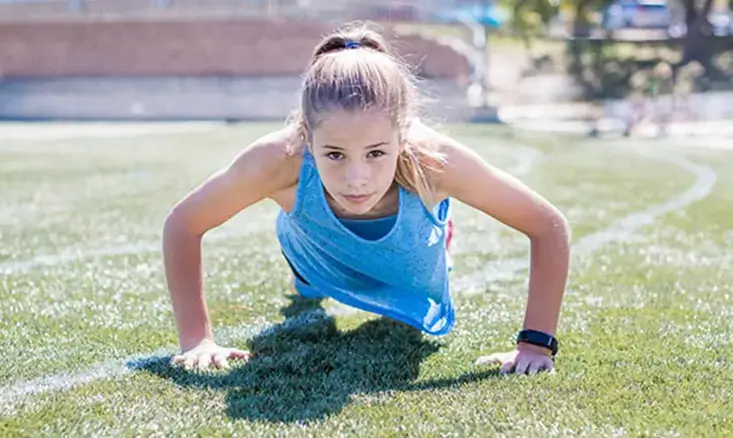
Challenges in Implementing Strength Training in Youth Soccer
Despite its benefits, some barriers exist:
- Lack of Awareness – Many coaches and parents still believe strength training is unsafe for young athletes.
- Limited Training Resources – Some youth programs lack access to proper facilities or trainers.
- Inconsistency – Players often neglect strength training due to busy schedules.
Solution
Education on safe and effective training, incorporating strength programs into team training sessions.
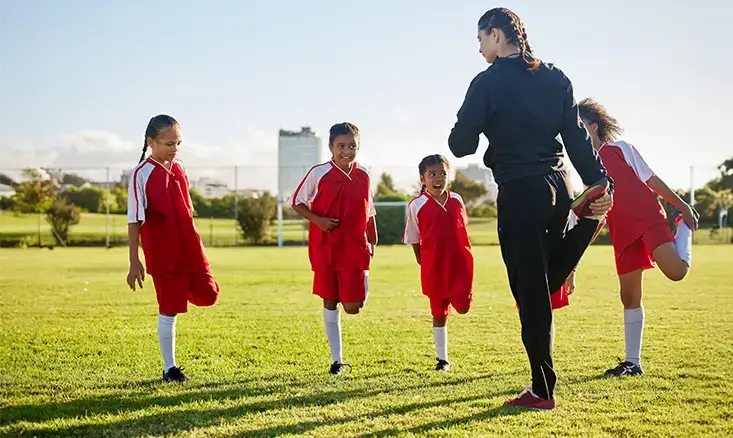
Conclusion
Strength training plays a critical role in injury prevention for youth soccer players. By integrating age-appropriate resistance, balance, and core training, young soccer players can improve stability, coordination, and muscle resilience, reducing the risk of common soccer-related injuries.
FAQs
Why is strength training important for young soccer players?
Strength training helps young soccer players build strong muscles, improve balance, and prevent common injuries like ankle sprains and knee injuries.
What are the best strength exercises for youth soccer players?
Bodyweight exercises like squats, lunges, planks, and push-ups are great for building strength and stability without heavy weights.
Can strength training prevent soccer injuries?
Yes! Strength training improves muscle endurance, joint stability, and body control, reducing the risk of injuries like ACL tears and hamstring strains.
Is strength training safe for kids in soccer?
When done correctly with light weights, resistance bands, and bodyweight exercises, strength training is safe and beneficial for youth players.
At what age should young soccer players start strength training?
Kids can start with basic bodyweight exercises at U5-U9, progress to resistance bands at U10-U13, and gradually use light weights from U14-U19.

Did you find this useful?


